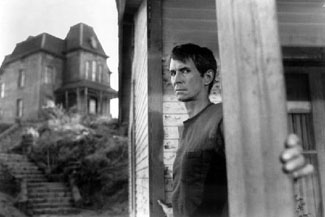|
|
Chapter Two: Psycho IIBy Brett BeachMay 26, 2011
As an act of cheekiness, or simply to put the inevitable comparisons to the first film front and center, Psycho II opens with Marion Crane’s last shower, excised (almost in whole) from Psycho, and thankfully kept in the original black and white. From there, Holland’s screenplay unleashes a heavily plotted whodunit that plays at times like the slasher cousin of a 1970s paranoid conspiracy thriller. Twenty-two years after being locked away in an asylum, Bates finds himself released back into society, the result of state budget cuts and the belief that two decades have helped him achieve a good rapport with reality. With no halfway house services available to help him ease back into society, Bates finds himself living at the only place he knows: that house on the hill. His tenuous grip on reality quickly goes out the window as it becomes apparent that someone is attempting to drive him crazy. Or is that really the case? Holland’s storyline may actually be a little too clever and pseudo-byzantine for its own good. I am not suggesting Psycho II is wrapped in a Chandler-esque plot fog by any means, but out of the six murders in the film, the identity/ies of who commits the first three is not something I could entirely vouch for. Considering the plot twists in the second half and the very real possibility that Norman isn’t the only one gone nutty, I maintain that this ambiguity, deliberate or otherwise, serves the film well. It also seems appropriate for a film where numerous characters are attempting to mindfuck one another and audience sympathies are apt to shift among the lead characters at various junctures.
|

|
|
|

|
Friday, November 1, 2024
© 2024 Box Office Prophets, a division of One Of Us, Inc.


